Charles M. Kozierok The TCP-IP Guide
Подождите немного. Документ загружается.

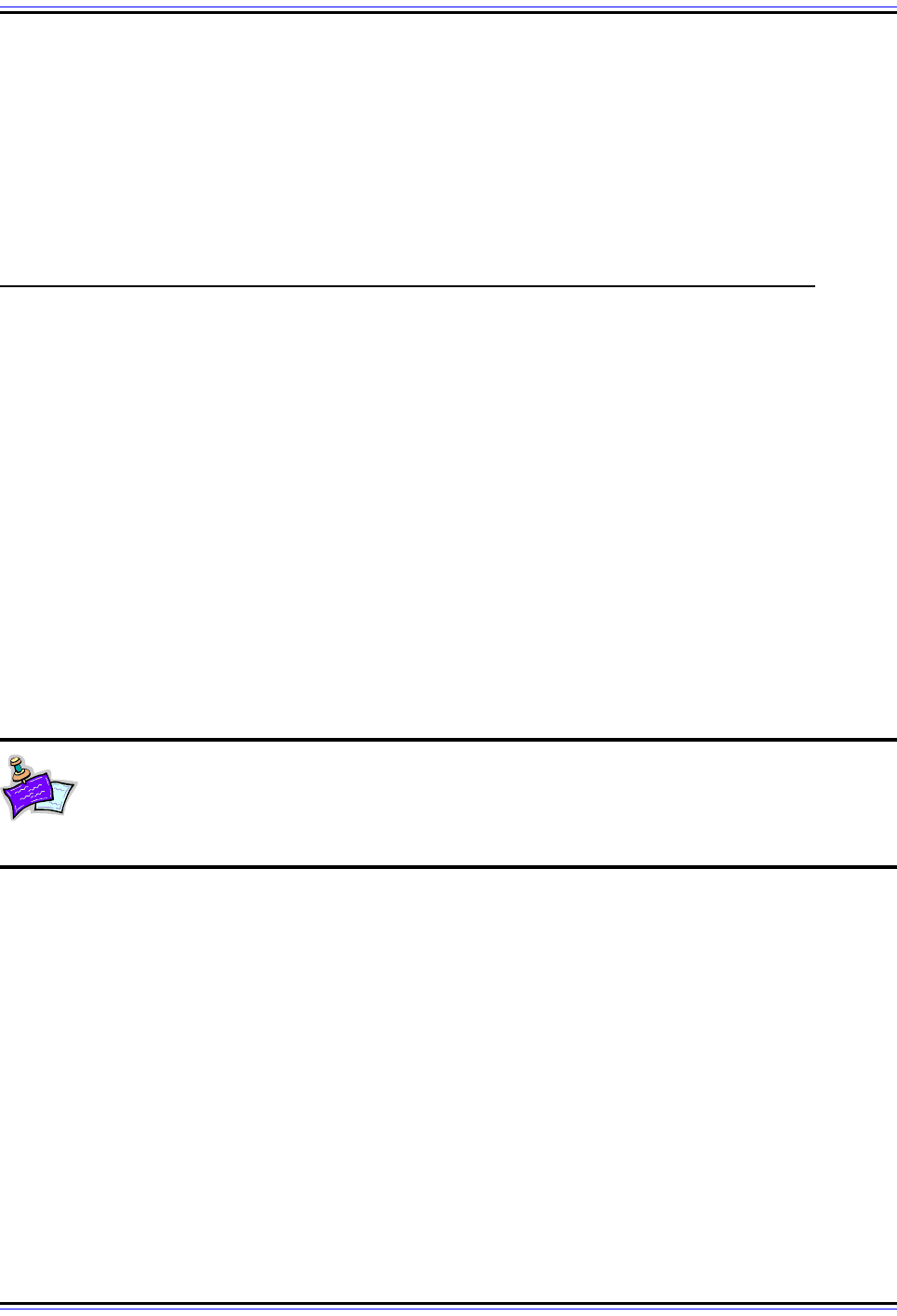
The TCP/IP Guide - Version 3.0 (Contents) ` 391 _ © 2001-2005 Charles M. Kozierok. All Rights Reserved.
Determining The Custom Subnet Mask Using Subnetting Tables
Now, what could be easier than that? Well, you could simply refer to the subnetting
summary tables. Find the table for the appropriate class, and then find the row that you
selected in the previous step that matches the number of subnet ID bits you want to use.
You can see the matching subnet mask right there.
(Hey, it's good to know how to do it yourself! You may not always have tables to refer to!)
IP Subnetting Step #4: Determining Subnet Identifiers and Subnet Addresses
The network ID assigned to our network applies to the entire network. This includes all
subnets and all hosts in all subnets. Each subnet, however, needs to be identified with a
unique subnet identifier or subnet ID, so it can be differentiated from the other subnets in
the network. This is of course the purpose of the subnet ID bits that we took from the host
ID bits in subnetting. After we have identified each subnet we need to determine the
address of each subnet, so we can use this in assigning hosts specific IP addresses.
This is another step in subnetting that is not really hard to understand or do. The key to
understanding how to determine subnet IDs and subnet addresses is to always work in
binary form, and then convert to decimal later. We will also look at a “shortcut” for deter-
mining addresses in decimal directly, which is faster but less conceptually simple.
Let's go directly to our examples to see how subnet IDs and addresses are determined. We
number the subnets starting with 0, and then going to 1, 2, 3 and so on, up to the highest
subnet ID that we need.
Note: I assume in this description that we will be using the all-zeroes and all-ones
subnet numbers. In the original RFC 950 subnetting system, those two subnets
are not used, which changes most of the calculations below. See here for an
explanation.
We determine the subnet IDs and addresses as follows
1. Subnet ID: This is just the subnet number, and can be expressed in either binary or
decimal form.
2. Subnet Address: This is the address formed by taking the address of the network as
a whole, and substituting the (binary) subnet ID in for the subnet ID bits. We need to
do this in binary, but only for the octets where there are subnet ID bits; the ones where
there are only network ID bits or only host ID bits are left alone.
Seem complicated? Let's go back to our examples and we’ll see that it’s really not.
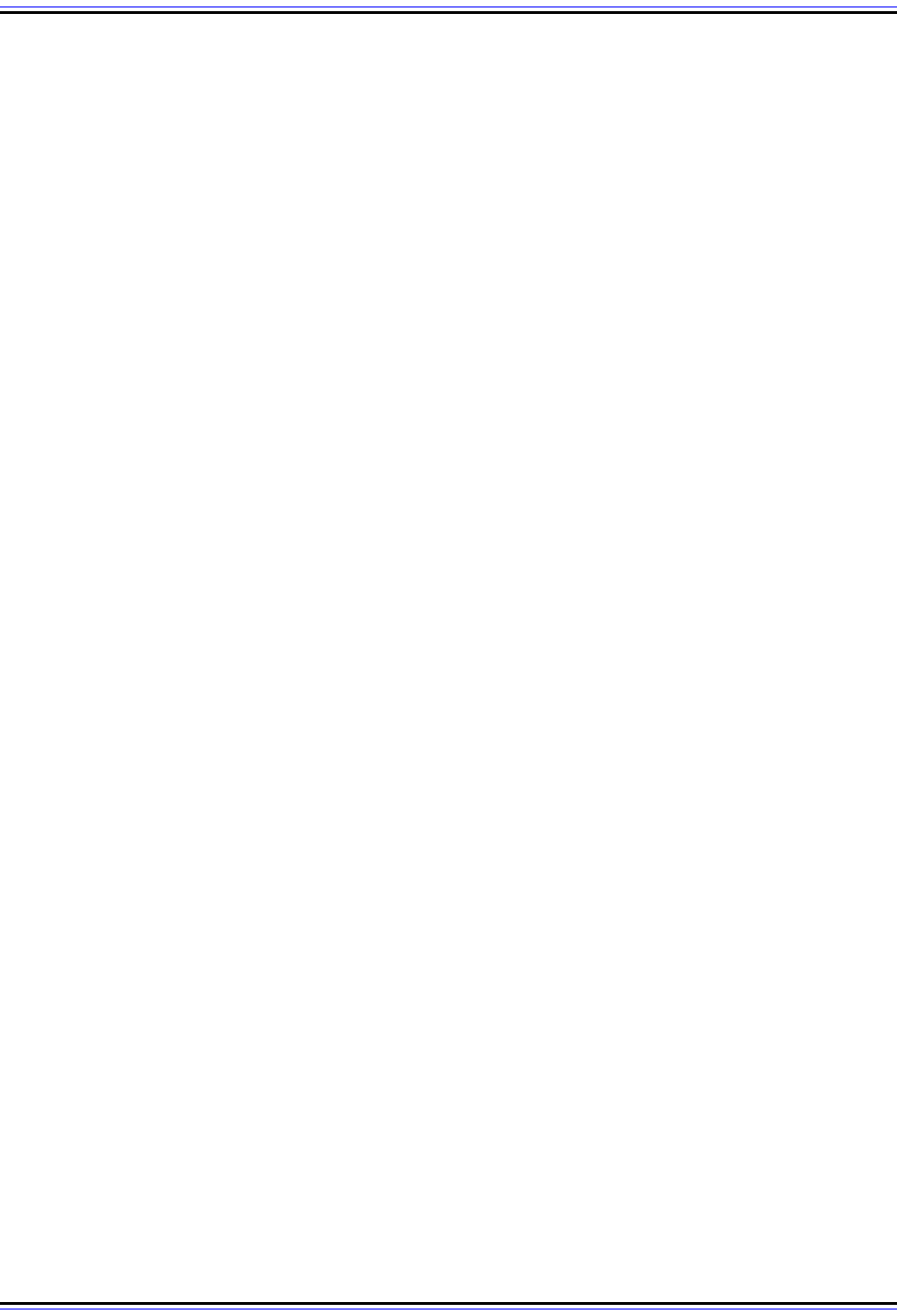
The TCP/IP Guide - Version 3.0 (Contents) ` 392 _ © 2001-2005 Charles M. Kozierok. All Rights Reserved.
Class C Subnet ID and Address Determination Example
Recall our Class C network, 211.77.20.0. The network address in binary is:
11010011 01001101 00010100 00000000
We are subnetting using 3 bits for the subnet ID, leaving 5 bits for the host ID. Now let's see
the network address with the subnet bits in bold:
11010011 01001101 00010100 00000000
These are the bits we substitute with the subnet ID for each subnet. Notice that since the
first three octets contain network ID bits, and the network ID is the same for every subnet,
they never change. We don't even really need to look at them in binary form, though for
clarity we will do so.
Here's how we determine the subnet IDs and addresses, again, starting with 0 (see Figure
78):
0. Subnet #0 has a subnet ID of 0, or 000 in binary. To find the address, we start with the
network address in binary, and substitute “000” for the subnet ID bits. Well gee, those
bits are already all zero! What this means is that the address for subnet #0 is the same
as the address for the network as a whole: 211.77.20.0.
This is always the case: subnet #0 always has the same address as the network.
1. Subnet #1 has a subnet ID of 1 in decimal or 001 in binary. To find the address we
substitute “001” for the subnet ID bits, to yield the following:
11010011 01001101 00010100 00100000
Converting to decimal, we get 211.77.20.32.
2. Subnet #2 has a subnet ID of 2, or 010 in binary. To find its address we substitute “010”
for the subnet ID bits, to give:
11010011 01001101 00010100 01000000
Which is 211.77.20.64 in binary.
3. Subnet #3 has a subnet ID of 011. As we can see the first three octets of the address
are always 211.77.20. The last octet here is “01100000”, which is 96 in decimal, so the
whole address is 211.77.20.96.
Starting to see a pattern here? Yep, the address of any subnet can be found by adding 32 to
the last octet of the previous subnet. This pattern occurs for all subnetting choices; the
increment depends on how many bits we are using for the subnet ID. Here, the increment is
32, which is 2
5
; 5 is the number of host ID bits left after we took 3 subnet ID bits.
4. Subnet #4 is 100, address is 211.77.20.128.
5. Subnet #5 is 101, address is 211.77.20.160.
6. Subnet #6 is 110, address is 211.77.20.192.
7. Subnet #7 is 111, address is 211.77.20.224.
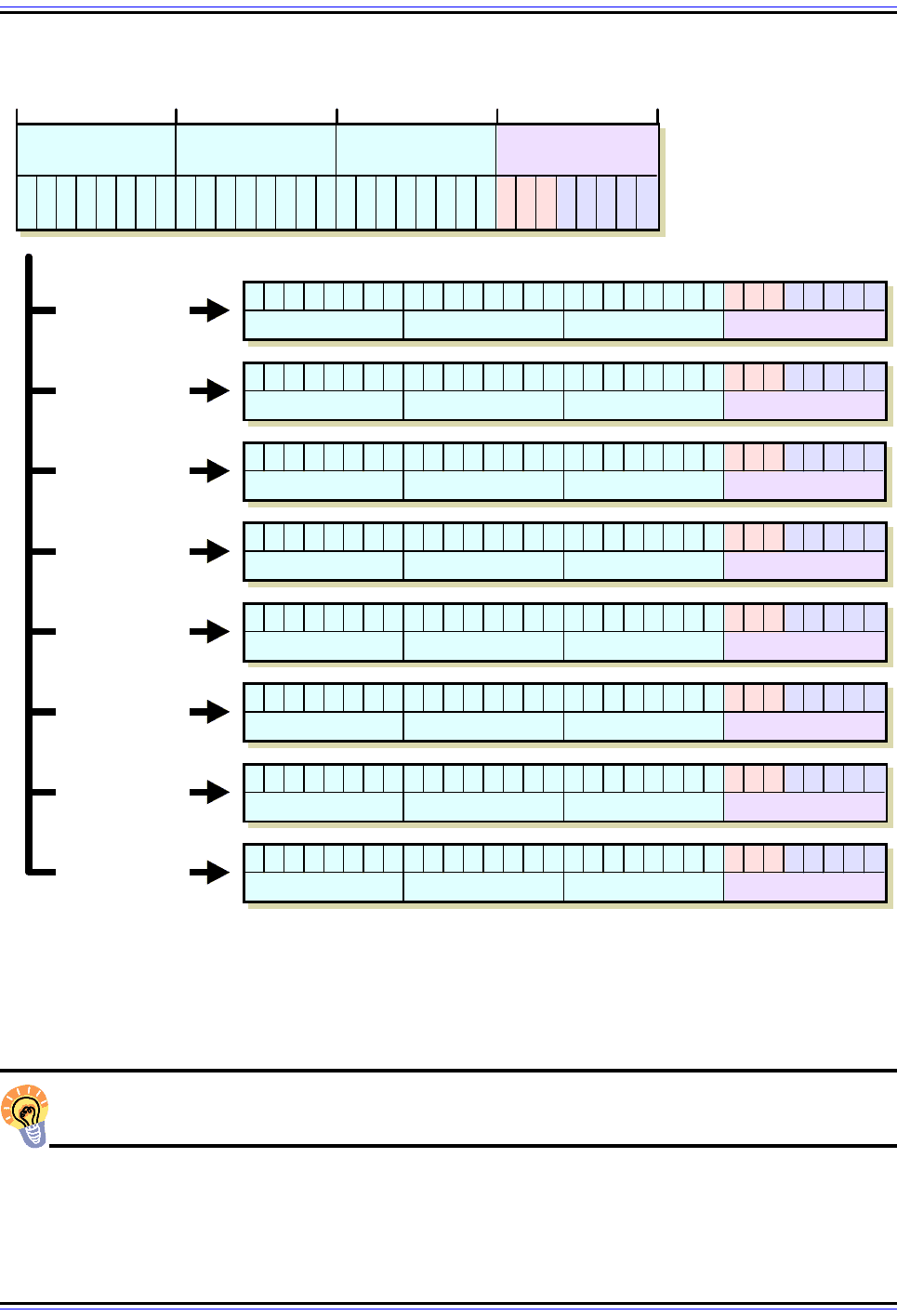
The TCP/IP Guide - Version 3.0 (Contents) ` 393 _ © 2001-2005 Charles M. Kozierok. All Rights Reserved.
Key Concept: The subnet addresses in a subnetted network are always evenly
spaced numerically, with the spacing depending on the number of subnet ID bits.
Figure 78: Determining Subnet Addresses For A Class C Network
This diagram shows each of the 8 possible subnets created when we use 3 bits for the subnet ID in a Class C
network. The binary subnet ID is simply substituted for the subnet bits, and the resulting 32-bit number
converted to dotted decimal form.
8 1624320
Class C Network
211.77.20.0 With
3 Subnet ID Bits
211 77 20 0
1 1 0 1 0 0 1 1 0 1 0 0 1 1 0 1 0 0 0 1 0 1 0 0
0 0 0
0 0 0 0 0
1 1 0 1 0 0 1 1 0 1 0 0 1 1 0 1 0 0 0 1 0 1 0 0
0 0 0
0 0 0 0 0
211 77 20
0
1 1 0 1 0 0 1 1 0 1 0 0 1 1 0 1 0 0 0 1 0 1 0 0
0 0 1
0 0 0 0 0
211 77 20
32
1 1 0 1 0 0 1 1 0 1 0 0 1 1 0 1 0 0 0 1 0 1 0 0
0 1 0
0 0 0 0 0
211 77 20
64
1 1 0 1 0 0 1 1 0 1 0 0 1 1 0 1 0 0 0 1 0 1 0 0
0 1 1
0 0 0 0 0
211 77 20
96
1 1 0 1 0 0 1 1 0 1 0 0 1 1 0 1 0 0 0 1 0 1 0 0
1 0 0
0 0 0 0 0
211 77 20
128
1 1 0 1 0 0 1 1 0 1 0 0 1 1 0 1 0 0 0 1 0 1 0 0
1 0 1
0 0 0 0 0
211 77 20
160
1 1 0 1 0 0 1 1 0 1 0 0 1 1 0 1 0 0 0 1 0 1 0 0
1 1 0
0 0 0 0 0
211 77 20
192
1 1 0 1 0 0 1 1 0 1 0 0 1 1 0 1 0 0 0 1 0 1 0 0
1 1 1
0 0 0 0 0
211 77 20
224
Subnet #0
Subnet ID 000
211.77.20.0
Subnet #1
Subnet ID 001
211.77.20.32
Subnet #2
Subnet ID 010
211.77.20.64
Subnet #3
Subnet ID 011
211.77.20.96
Subnet #4
Subnet ID 100
211.77.20.128
Subnet #5
Subnet ID 101
211.77.20.160
Subnet #6
Subnet ID 110
211.77.20.192
Subnet #7
Subnet ID 111
211.77.20.224
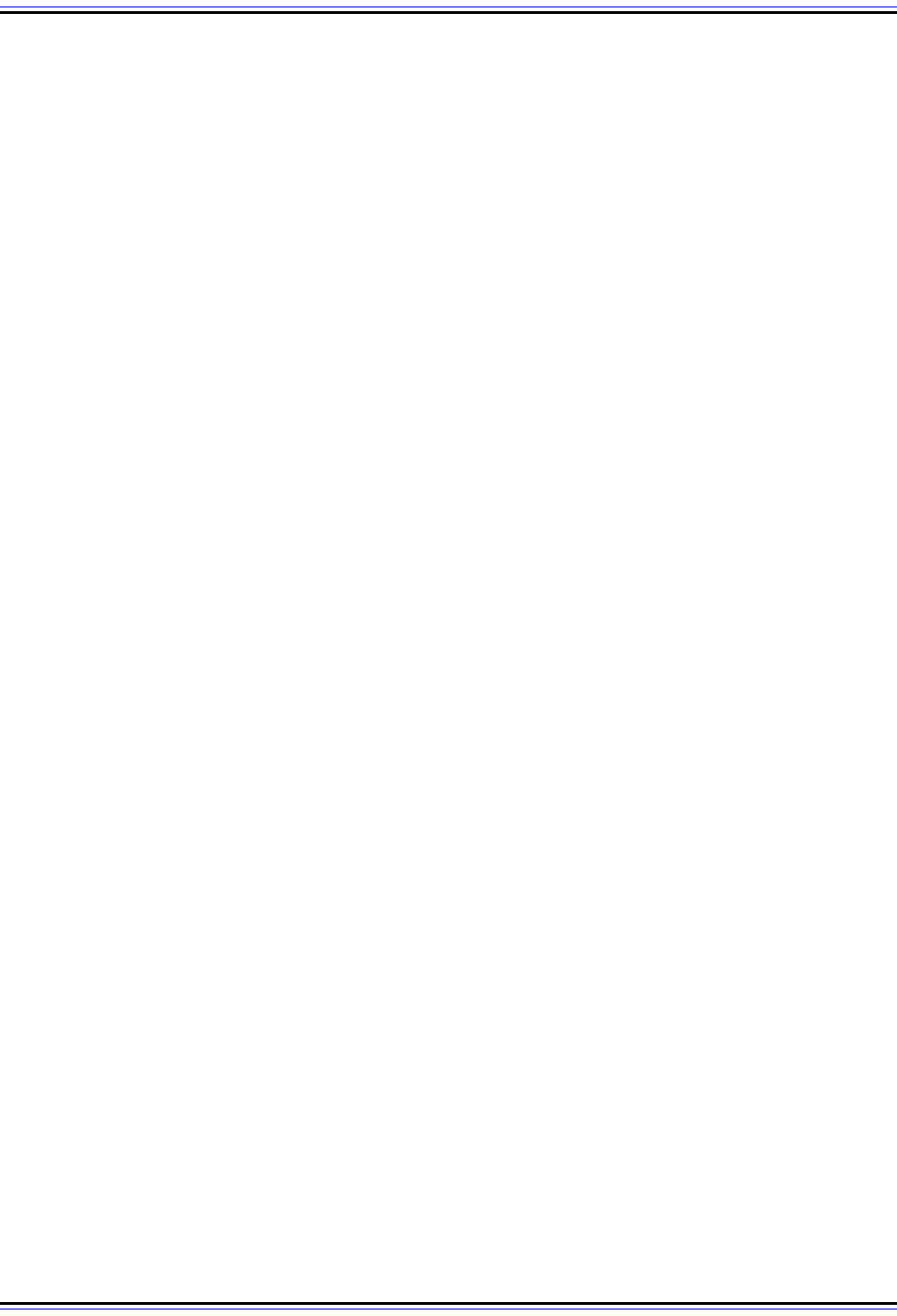
The TCP/IP Guide - Version 3.0 (Contents) ` 394 _ © 2001-2005 Charles M. Kozierok. All Rights Reserved.
We only needed seven subnets in our example, #0 through #6. Subnet #7 would be a
spare. Notice that the last subnet has the same last octet as the subnet mask for our
network? That's because we substituted “111” for the subnet ID bits, just as we did when we
calculated the subnet mask.
Class B Subnet ID and Address Determination Example
Let's look at our other example now, Class B network 166.113.0.0. In binary this is:
0100110 01110001 00000000 00000000
We are using 5 bits for the subnet ID, leaving 11 host ID bits. The network address with the
subnet ID bits highlighted is:
0100110 01110001 00000000 00000000
Here, only the third octet will ever change for the different subnets. The first two will always
be “166.113” and the last octet will always be zero. There are 32 possible subnets; I'll list
the first few so you can see the pattern (refer to Figure 79 as well):
0. Subnet #0 has a subnet ID of 00000. This means the address will be 166.113.0.0, the
network address, as we would expect.
1. Subnet #1 has a subnet ID of 00001. The address becomes:
10100110 01110001 00001000 00000000
This is 116.113.8.0 in decimal.
2. Subnet #2 has a subnet ID of 00010, giving an address of 116.113.00010000.0 or
116.113.16.0.
3. Subnet #3 has a subnet ID of 00011 and a subnet address of 116.113.24.0.
Again, the pattern here is obvious: you add 8 to the third octet to get successive addresses.
The last subnet here is #31, which has a subnet address of 116.113.248.0, which has the
same third and fourth octets as our subnet mask of 255.255.248.0.
Using Subnet Address Formulas to Calculate Subnet Addresses
Since the subnet addresses form a pattern, and the pattern depends on the number of
subnet ID bits, it is possible to express the subnet addresses using a single formula for
each subnetting option. I have shown these formulas for each of Classes A, B and C in the
subnetting summary tables. The formulas can be used to directly calculate the address of
subnet #N, where N is numbered from 0 up to one less than the total number of subnets, as
we have done above.
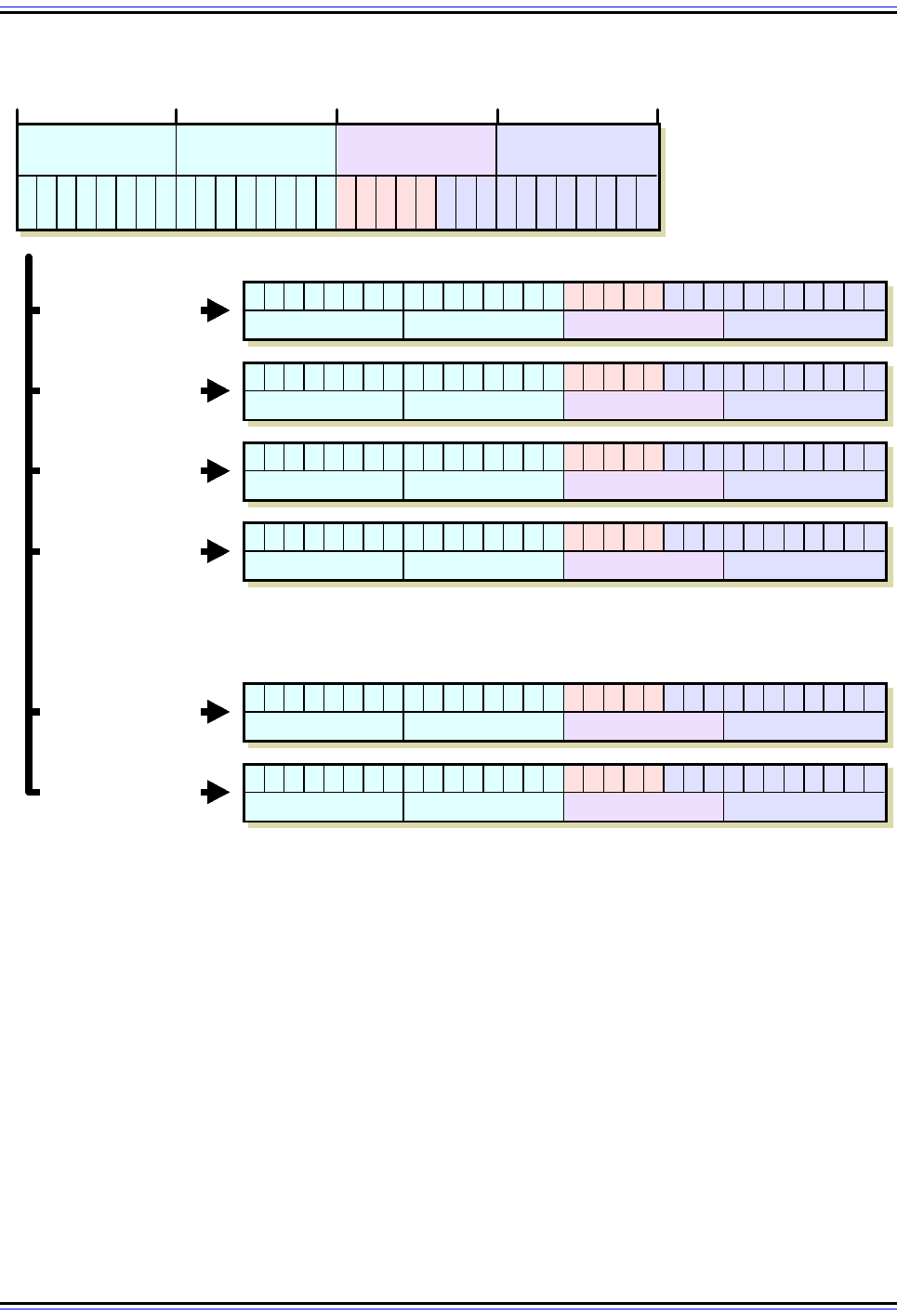
The TCP/IP Guide - Version 3.0 (Contents) ` 395 _ © 2001-2005 Charles M. Kozierok. All Rights Reserved.
Basic Subnet Formula Calculations
In these formulas, the network ID bits are shown as “x.”, or “x.y.” or “x.y.z.” for the three
classes. This just means that the subnet addresses have as those octets whatever the
numbers are in those octets for the network address. In our examples, “x.y” would be
“166.113” for our Class B network, and “x.y.z” would be “211.77.20” for our Class C.
When the number of subnet bits is 8 or less, the formula is relatively simple, and a calcu-
lation is done for only one octet, as a multiplication of N, such as “N*4” or “N*32”. This is
usually the case, since the number of subnets is usually less than 256, and it's the case
with both of our examples.
Figure 79: Determining Subnet Addresses For A Class B Network
This is the same as Figure 78, but for a Class B network with 5 subnet ID bits (I have not shown all 32
subnets, for obvious reasons!)
8 1624320
Class B Network
166.113.0.0 With 5
Subnet ID Bits
166 113 0 0
1 0 1 0 0 1 1 0 0 1 1 1 0 0 0 1
0 0 0 0 0
0 0 0 0 0 0 0 0 0 0 0
Subnet #0
Subnet ID 00000
166.113.0.0
1 0 1 0 0 1 1 0 0 1 1 1 0 0 0 1
0 0 0 0 0
0 0 0 0 0 0 0 0 0 0 0
166 113
0
0
1 0 1 0 0 1 1 0 0 1 1 1 0 0 0 1
0 0 0 0 1
0 0 0 0 0 0 0 0 0 0 0
166 113
8
0
1 0 1 0 0 1 1 0 0 1 1 1 0 0 0 1
0 0 0 1 1
0 0 0 0 0 0 0 0 0 0 0
166 113
24
0
1 0 1 0 0 1 1 0 0 1 1 1 0 0 0 1
0 0 0 1 0
0 0 0 0 0 0 0 0 0 0 0
166 113
16
0
1 0 1 0 0 1 1 0 0 1 1 1 0 0 0 1
1 1 1 1 0
0 0 0 0 0 0 0 0 0 0 0
166 113
240
0
1 0 1 0 0 1 1 0 0 1 1 1 0 0 0 1
1 1 1 1 1
0 0 0 0 0 0 0 0 0 0 0
166 113
248
0
Subnet #1
Subnet ID 00001
166.113.8.0
Subnet #2
Subnet ID 00010
166.113.16.0
Subnet #3
Subnet ID 00011
166.113.24.0
Subnet #30
Subnet ID 11110
166.113.240.0
Subnet #31
Subnet ID 11111
166.113.248.0
. . .
. . .

The TCP/IP Guide - Version 3.0 (Contents) ` 396 _ © 2001-2005 Charles M. Kozierok. All Rights Reserved.
In our Class C network with 3 subnet ID bits, the formula from the table is “x.y.z.N*32”. For
this network, all subnets are of the form “211.77.20.N*32”, with N going from 0 to 7. So,
subnet #5 is 211.77.20.(5*32), which is 211.77.20.160, as we saw before. Similarly, in our
Class B network with 5 subnet ID bits, the formula is x.y.N*8.0. In this case “x.y” is 166.113.
Subnet #26 would have the address 166.113.(26*8).0, or 166.113.208.0.
This is pretty simple stuff, and make the formulas a good short-cut for quickly determining
subnet addresses, especially when there are many subnets. They can also be used in a
spreadsheet. The only place that using the formulas requires a bit of care is when the
number of subnet bits is 9 or more. This means the subnet identifier crosses an octet
boundary, and this causes the formula to becomes more complex. So consider the rest of
this topic optional, and skip it if you don't want to complicate your brain. ☺
Subnet Formula Calculations With More Than 8 Subnet Bits
When the number of subnet bits is greater than 8, some of the octets are of the form “N
divided by an integer”, such as “N/8”. This is an integer division, which means “divide N by
8, keep the integer part and drop the fractional part or remainder”. Other octets are calcu-
lated based on the modulo of N, shown as “N%8”. This is the exact opposite: it means,
“divide N by 8, drop the integer and keep the remainder”. For example, 33/5 in integer math
is 6 (6 with a remainder of 3, drop the remainder, or alternately, 6.6, drop the fraction).
33%5 is 3 (6 with a remainder of 3, drop the 6, keep the remainder).
Let's take as an example our Class B network and suppose that for some strange reason
we decided to use 10 bits for the subnet ID instead of 5. In this case, the formula is “x.y.N/
4.(N%4)*64”. Subnet #23 in this case would have the address “166.113.23/4.(23%4)*64.
The 23/4 becomes just 5 (the fractional.75 is dropped). 23 modulo 4 is 3, which is multiplied
by 64 to get 192. So the subnet address is “166.113.5.192”. Subnet #709 would be
“116.113.709/4.(709%4)*64, which is 116.113.177.64.
Subnet Formula Calculations With More Than 16 Subnet Bits
Okay, now for the real fun. If you subnet a Class A address using more than 16 bits for the
subnet ID, you are crossing two octet boundaries, and the formulas become very … inter-
esting, involving both integer division and modulo. Suppose we were in charge of Class A
address 21.0.0.0 and choose to subnet it. However, we sat down to do this after having had
a few stiff ones at the office holiday party, so our judgment is a bit impaired. We decide that
it would be a great idea to choose 21 bits for our subnet ID, since we like the number 21.
This gives us a couple million subnets.
The formula for subnet addresses in this case, is “x.N/8192.(N/32)%256.(N%32)*8”. Yikes.
Well, this is a bit involved—so much so that it might be easier to just take a subnet number
and do it in binary, the long way. But let's take an example and see how it works, for, say,
subnet #987654. The first octet is of course 21. The second octet is 987654/8192, integer
division. This is 120. The third octet is (987654/32)%256. The result of the division is 30864
(we drop the fraction). Then, we take 30864%256, which yields a remainder of 144. The
fourth octet is (987654%32)*8. This is 6*8 or 48. So subnet address #987654 is
21.120.144.48.
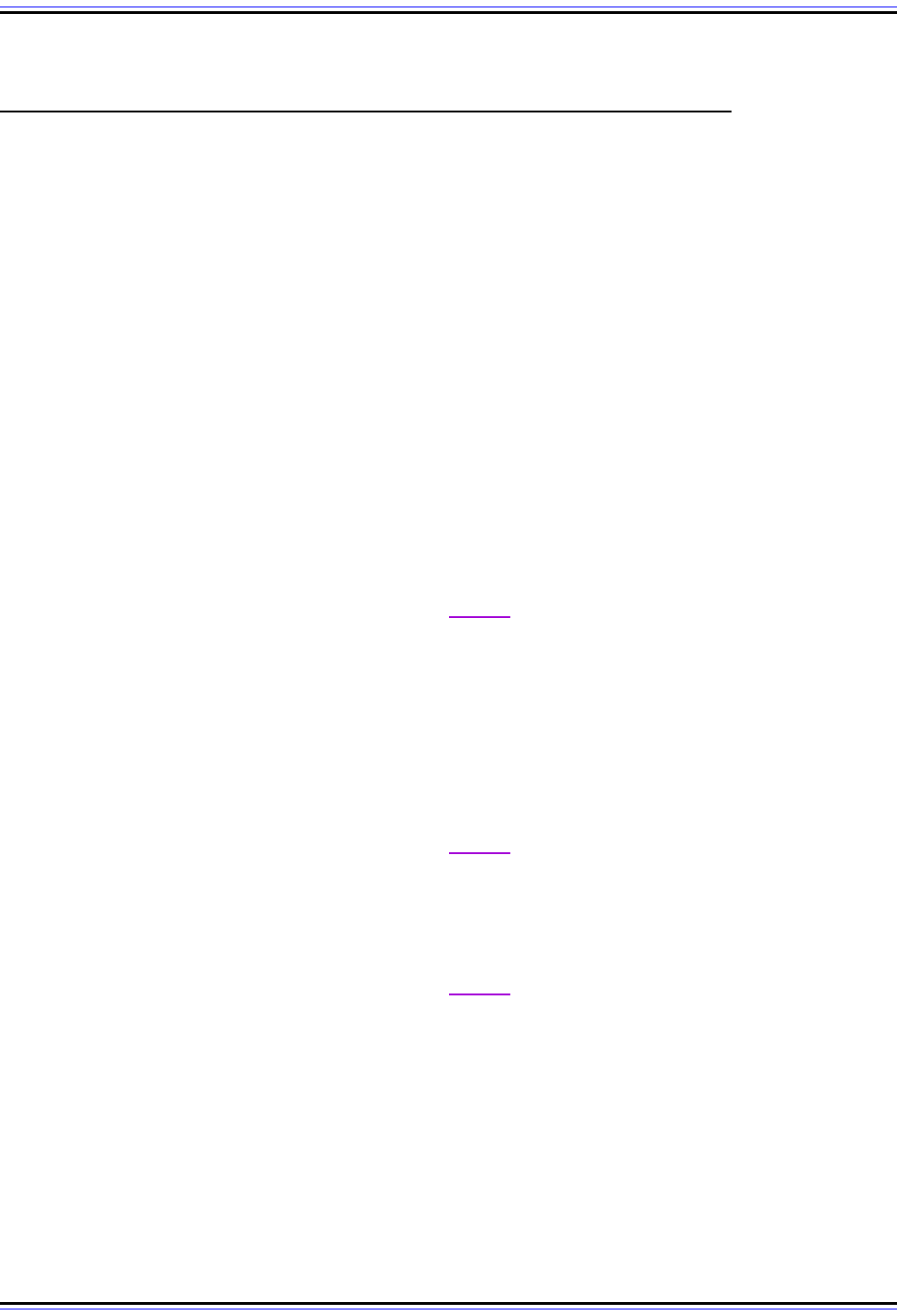
The TCP/IP Guide - Version 3.0 (Contents) ` 397 _ © 2001-2005 Charles M. Kozierok. All Rights Reserved.
(Don't drink and drive. Don't drink and subnet either. ☺)
IP Subnetting Step #5: Determining Host Addresses For Each Subnet
Once we know the addresses of each of the subnets in our network, we use these
addresses as the basis for assigning IP addresses to the individual hosts in each subnet.
We start by associating a subnet base address with each physical network (since at least in
theory, our subnets correspond to our physical networks). We then sequentially assign
hosts particular IP addresses within the subnet (or in a different manner, if we prefer!)
Determining host addresses is really quite simple, once we know the subnet address. All
we do is substitute the numbers 1, 2, 3… and so on for the host ID bits in the subnet
address. We must do this in binary of course, and then convert the address to decimal form.
Again, we can do some “short-cutting” once the rather obvious pattern of how to assign
addresses emerges. We'll look at those later in the topic.
Class C Host Address Determination Example
Let's start with our Class C example again, 211.77.20.0, which we divided into 8 subnets
using 3 subnet bits. Here's how the address appears with the subnet bits shown
highlighted, and the host ID bits shown highlighted and underlined.:
11010011 01001101 00010100 00000000
The first subnet is subnet #0, which has all zeroes for those subnet bits, and thus the same
address as the network as a whole: 211.77.20.0. We substitute the numbers 1, 2, 3 and so
on for the underlined bits to get the host IDs. (Remember that we don't start with 0 here
because for the host ID, the all-zero and all-one binary patterns have special meaning). So
it goes like this:
1. The first host address has the number 1 for the host ID, or “00001” in binary. So, it is:
11010011 01001101 00010100 00000001
In decimal, this is 211.77.20.1.
2. The second host address has the number 2 for the host ID, or “00010” in binary. Its
binary value is:
11010011 01001101 00010100 00000010
In decimal, this is 211.77.20.2
I'm sure you get the picture already; the third host will be 211.77.20.3, the fourth
211.77.20.4 and so on. There is a maximum of 30 hosts in each subnet, as we saw before.
So, the last host in this subnet will be found by substituting 30 (11110 in binary) for the host
ID bits, resulting in a decimal address of 211.77.20.30.
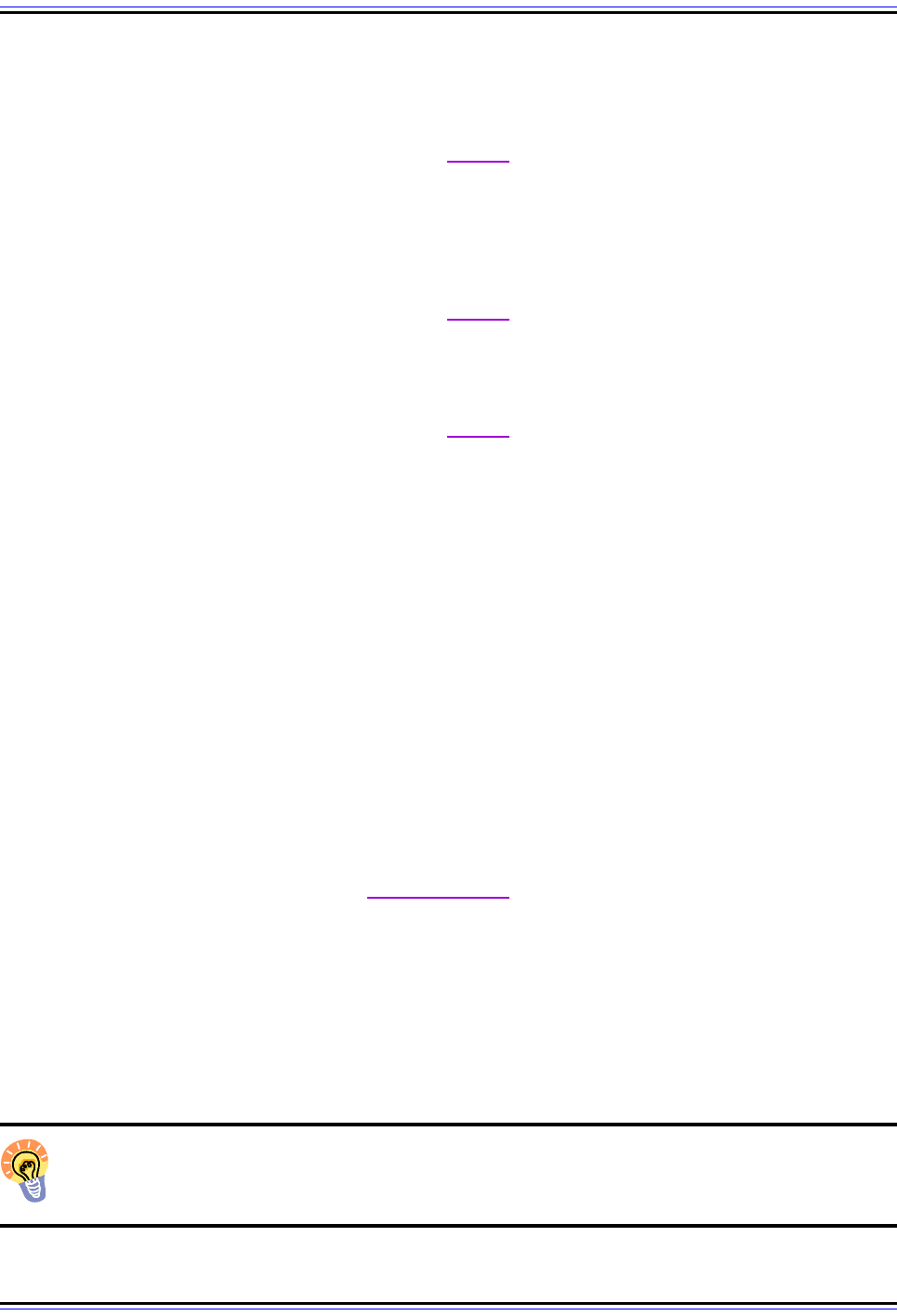
The TCP/IP Guide - Version 3.0 (Contents) ` 398 _ © 2001-2005 Charles M. Kozierok. All Rights Reserved.
We can do the same thing for each of the other subnets; the only thing that changes is the
values in the subnet ID bits. Let's take for example, subnet #6. It has “110” for the subnet
bits instead of “000”. So, its subnet base address is 211.77.20.192, or:
11010011 01001101 00010100 11000000
We assign hosts to this subnet by substituting 00001, then 00010, then 00011 for the host
ID bits as before:
1. The first host address is:
11010011 01001101 00010100 11000001
Or 211.77.20.193.
2. The second host address is:
11010011 01001101 00010100 11000010
Or 211.77.20.194.
And so on, all the way up to the last host in the subnet, which is 211.77.20.222. Figure 80
shows graphically how subnet and host addresses are calculated for this sample network.
One more address we may wish to calculate is the broadcast address for the subnet. This
of course is one of the special cases, found by substituting all ones for the host ID. For
subnet #0, this would be 211.77.20.31. For subnet #6, it would be 211.77.20.223. That's
pretty much all there is to it.
Class B Host Address Determination Example
We can do the same thing for our Class B network, naturally. The address of that network is
166.113.0.0. Now, say we want to define the hosts that go in subnet #13. We substitute 13
in binary (01101) for the subnet ID bits, to get the following subnet address, shown with the
subnet ID bits highlighted and the host ID bits highlighted and underlined:
10100110 01110001 01101000 00000000
This is the subnet address 166.113.104.0. Now, we have 11 bits of host ID, so we can have
a maximum of 2,046 hosts. The first is found by substituting “000 00000001” for the host ID
bits”, to give an address of 166.113.104.1. The second host is 166.113.104.2, and so on.
The last is found by substituting “111 11111110”, to give an address of 166.113.111.254.
Note that since the host ID bits extend over two octets, two octets change as we increment
the host ID, unlike our Class C example. The broadcast address is 166.113.111.255.
Key Concept: In a subnetted network, the address of host #H within subnet number
#S is found by plugging in the binary value of S for the network’s subnet ID bits, and
the binary value of H for subnet’s host ID bits.
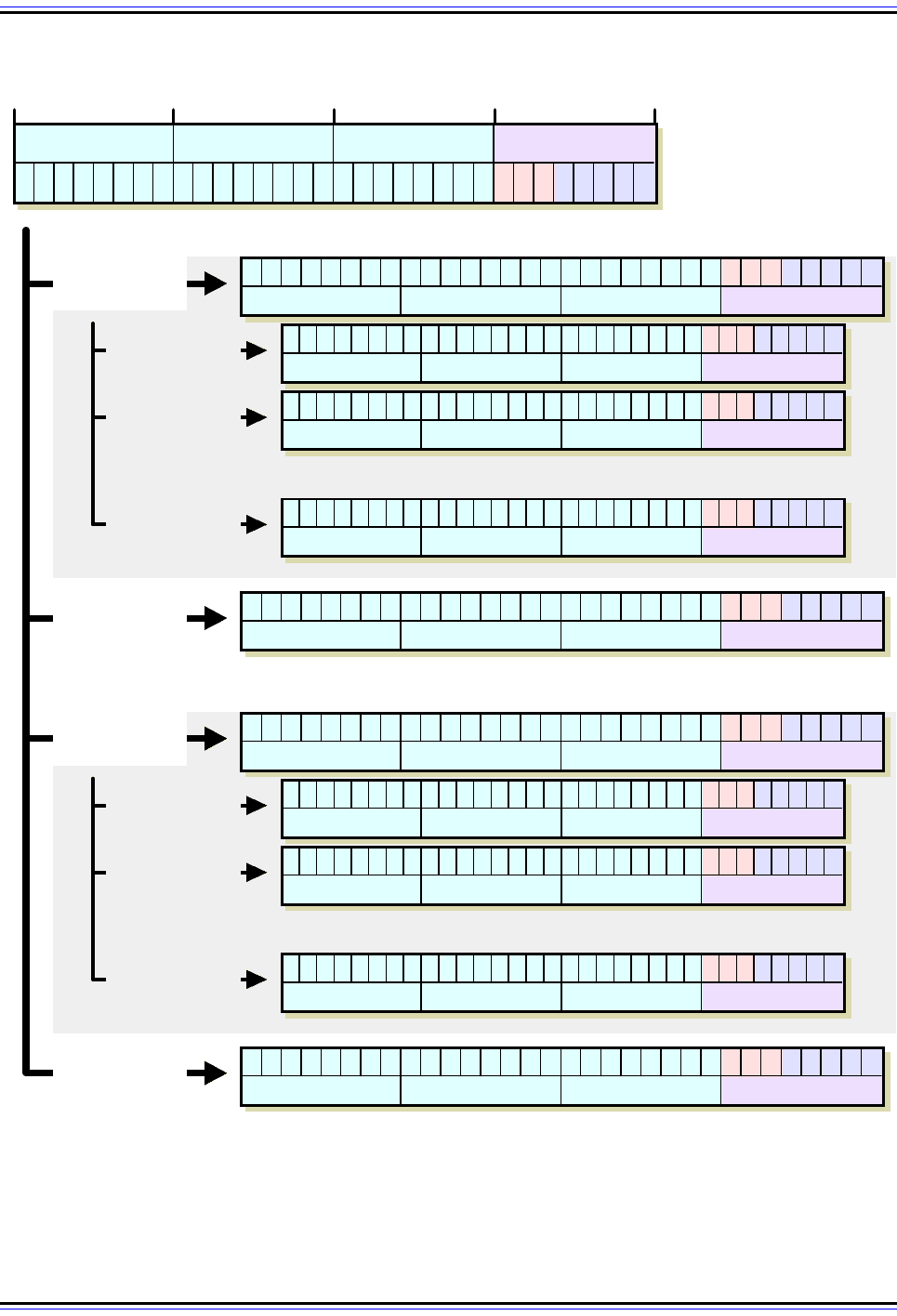
The TCP/IP Guide - Version 3.0 (Contents) ` 399 _ © 2001-2005 Charles M. Kozierok. All Rights Reserved.
Figure 80: Determining Host Addresses For A Class C Network
This diagram shows how both subnet addresses and host addresses are determined in a two-step process.
The subnet addresses are found by substituting subnet ID values (shown in red) for the subnet ID bits of the
network. Then, for any given subnet address, we can determine a host address by substituting a host number
(shown in blue) for the host ID bits within that subnet. So, for example, host #2 in subnet #6 has “110” for the
subnet ID and “00010” for the host ID, resulting in a final octet value of “11000010” or 194.
8 1624320
Class C Network
211.77.20.0 With
3 Subnet ID Bits
211 77 20 0
1 1 0 1 0 0 1 1 0 1 0 0 1 1 0 1 0 0 0 1 0 1 0 0
0 0 0
0 0 0 0 0
1 1 0 1 0 0 1 1 0 1 0 0 1 1 0 1 0 0 0 1 0 1 0 0
0 0 0
0 0 0 0 0
211 77 20
0
Subnet #0
Subnet ID 000
1 1 0 1 0 0 1 1 0 1 0 0 1 1 0 1 0 0 0 1 0 1 0 0 0 0 0
0 0 0 0 1
211 77 20
1
1 1 0 1 0 0 1 1 0 1 0 0 1 1 0 1 0 0 0 1 0 1 0 0 0 0 0
0 0 0 0 1
211 77 20
2
. . .
1 1 0 1 0 0 1 1 0 1 0 0 1 1 0 1 0 0 0 1 0 1 0 0 0 0 0
1 1 1 1 0
211 77 20
30
Host #1
Host ID 00001
Host #30
Host ID 11110
1 1 0 1 0 0 1 1 0 1 0 0 1 1 0 1 0 0 0 1 0 1 0 0
1 1 0
0 0 0 0 0
211 77 20
192
. . .
. . .
1 1 0 1 0 0 1 1 0 1 0 0 1 1 0 1 0 0 0 1 0 1 0 0
0 0 1
0 0 0 0 0
211 77 20
32
. . .
1 1 0 1 0 0 1 1 0 1 0 0 1 1 0 1 0 0 0 1 0 1 0 0 1 1 0
0 0 0 0 1
211 77 20
193
1 1 0 1 0 0 1 1 0 1 0 0 1 1 0 1 0 0 0 1 0 1 0 0 1 1 0
0 0 0 1 0
211 77 20
194
1 1 0 1 0 0 1 1 0 1 0 0 1 1 0 1 0 0 0 1 0 1 0 0 1 1 0
1 1 1 1 0
211 77 20
222
. . .
1 1 0 1 0 0 1 1 0 1 0 0 1 1 0 1 0 0 0 1 0 1 0 0
1 1 1
0 0 0 0 0
211 77 20
224
Host #2
Host ID 00010
Subnet #6
Subnet ID 110
. . .
Host #1
Host ID 00001
Host #30
Host ID 11110
Host #2
Host ID 00010
Subnet #1
Subnet ID 001
Subnet #7
Subnet ID 111
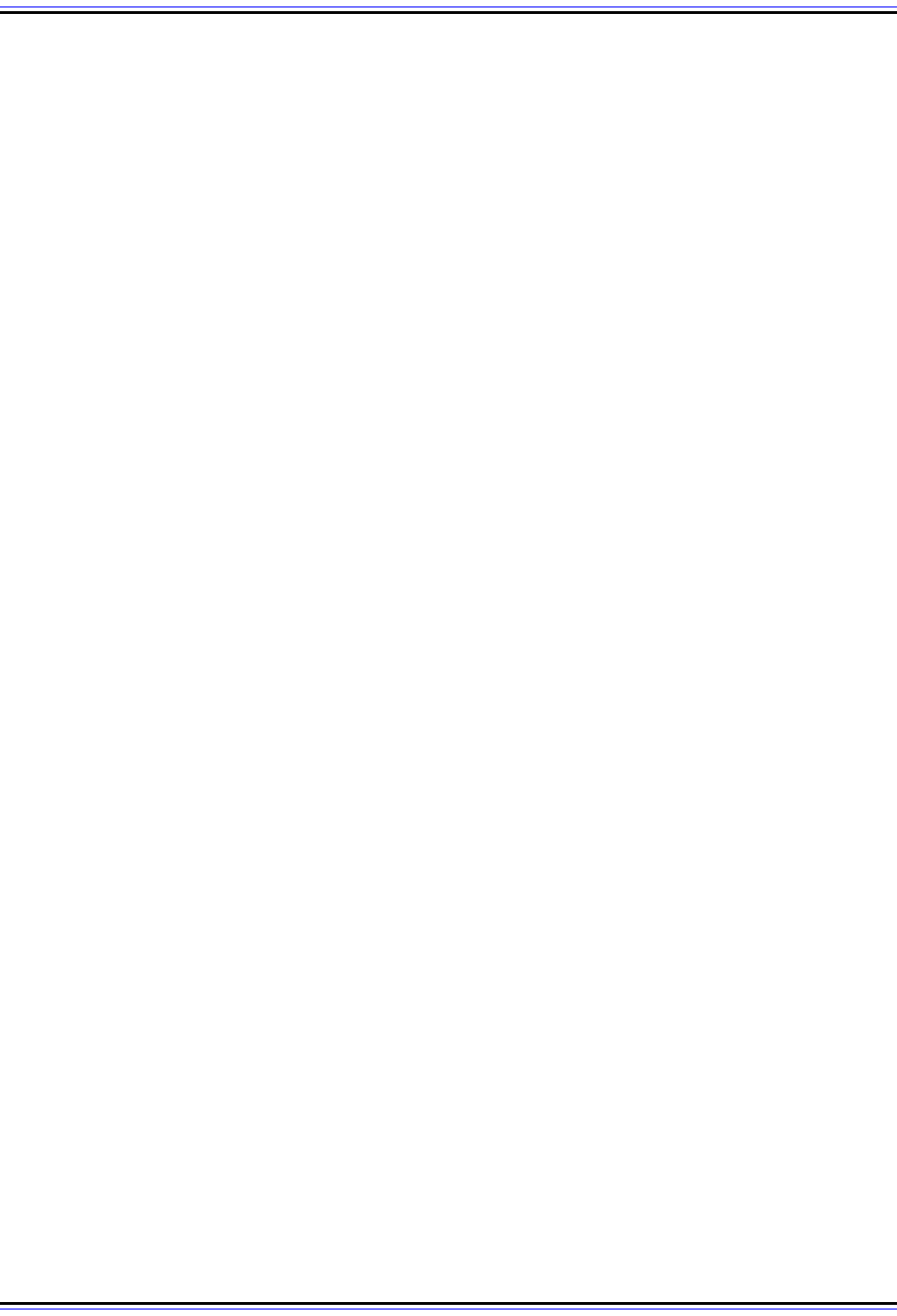
The TCP/IP Guide - Version 3.0 (Contents) ` 400 _ © 2001-2005 Charles M. Kozierok. All Rights Reserved.
"Shortcuts" For Quickly Computing Host Addresses
As you can see, defining the host IDs is really quite straight-forward. If you can substitute
bits and convert to decimal, you have all you need to know. You can also see that as was
the case with defining the subnet addresses, there are patterns that you can use in defining
host IDs and understanding how they work. These generally define ways that we can more
quickly determine certain host addresses by working directly in decimal instead of bothering
with binary substitutions. This is a bit more complex conceptually, so only proceed if you are
feeling a bit brave.
The following are some of the “shortcuts” you can use in determining host IP addresses in a
subnet environment:
☯ First Host Address: The first host address is always the subnet address with the last
octet incremented by 1. So, in our class C example, subnet #3's base address is
211.77.20.96. The first host address in subnet #3 is thus 211.77.20.97.
☯ Subsequent Host Addresses: After you find the first host address, to get the next
one you just add one to the last octet of the previous address. If this makes the last
octet 256 (which can happen only if there are more than 8 host ID bits) you “wrap
around” this to zero and increment the third octet.
☯ Directly Calculating Host Addresses: If the number of host ID bits is 8 or less, you
can find host #N's address by adding “N” to the last octet's decimal value. For
example, in our class C example, subnet #3's base address is 211.77.20.96.
Therefore, host #23 in this subnet has an address of 211.77.20.119.
If there are more than 8 bits in the host ID, this only works for the first 255 hosts, after
which you have to “wrap around” and increase the value of the third octet. Consider
again subnet #13 in our Class B example, which has a base address of 166.113.104.0.
Host #214 on this subnet has address 166.113.104.0, but host #314 isn't
166.113.104.314. It is 166.113.105.58 (host #255 is 166.113.104.255, then host #256
is 166.113.105.0, and we count up 58 more (314-256) to get to #314, 166.113.105.58).
☯ Range Of Host Addresses: The range of hosts for any subnet is determined as
follows:
☯ First Address: Base address of subnet with last octet incremented by one.
☯ Last Address: Base address of next subnet after this one, less two in the last
octet (which may require changing a “0” in the last octet to “254” and reducing the
value of the third octet by 1).
For example, consider subnet #17 in our Class B example. Its subnet address is
166.113.136.0. The address of subnet #18 is 166.113.144.0. So, the range of hosts for
subnet #17 is 166.113.136.1 to 166.113.143.254.
☯ Broadcast Address: The broadcast address for a subnet is always one less than the
base address of the subsequent subnet. Or alternately, one more than the last “real”
host address of the subnet. So, for subnet #17 in our Class B example, the broadcast
address is 166.113.143.255.
Did I just confuse you? Well, remember, these are shortcuts and sometimes when you take
a shortcut you get lost. ☺ Just kidding, it's really not that hard once you play around with it a
bit.
